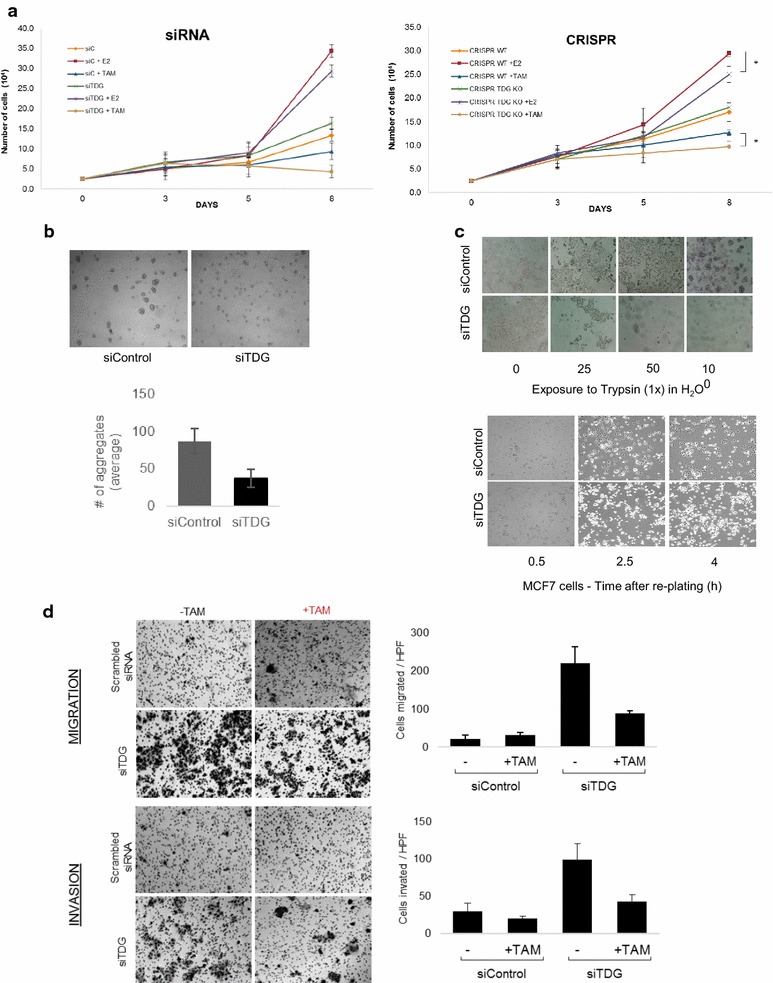Fig. 8.

TDG depletion sensitizes MCF7 cells to Tamoxifen and produces proliferation and attachment deficiencies. a Growth curves examining responsiveness of CRISPR-mediated (right panel) and siRNA-mediated (left panel) TDG knockout and knockdown, respectively. MCF7 cells were grown for 48–72 h in charcoal-stripped phenol red-free media prior to treatment (left panel) (n = 3, p value < 0.05, error bars show ∓ 1 standard deviation). b To examine migration and adhesion, MCF7 cells were treated with either scrambled siRNA or siRNA targeting TDG and grown in regular media for 2 days prior to performing the cell-to-cell adhesion assay. We found that MCF7 s with depleted levels of TDG form significantly less aggregates with one another (n = 4, error bars indicate standard deviation ∓ 1). c Treatment of MCF7 cells with varying concentration of trypsin revealed that those depleted of TDG detached from tissue-plate substratum at lower concentrations (top panel) and upon resuspension TDG-depleted cells demonstrated re-attachment deficiencies, remaining loosely attached and spherical while cells treated with siControl became stabilized with visible “flattening” indicative of cell-substratum contacts(bottom panel). d To measure the effect of TDG on the migration and invasion capacity, TDG was depleted in MCF7 cells using siRNA which were treated with or without Tamoxifen for 3d. Cells were harvested using 3 mM EDTA, and a suspension of 100,000 cells was incubated at 37 °C for 72 in gelatin or Matrigel to test migration and invasion, respectively. Cells were counted using ImageJ (n = 4). MCF7s depleted of TDG show a drastically more aggressive profile with cells migrating and invading gel at a significantly higher rate than siControl cells. Tamoxifen treatment had an impact on the increased aggressiveness, although failed to restore cells to basal capacity
